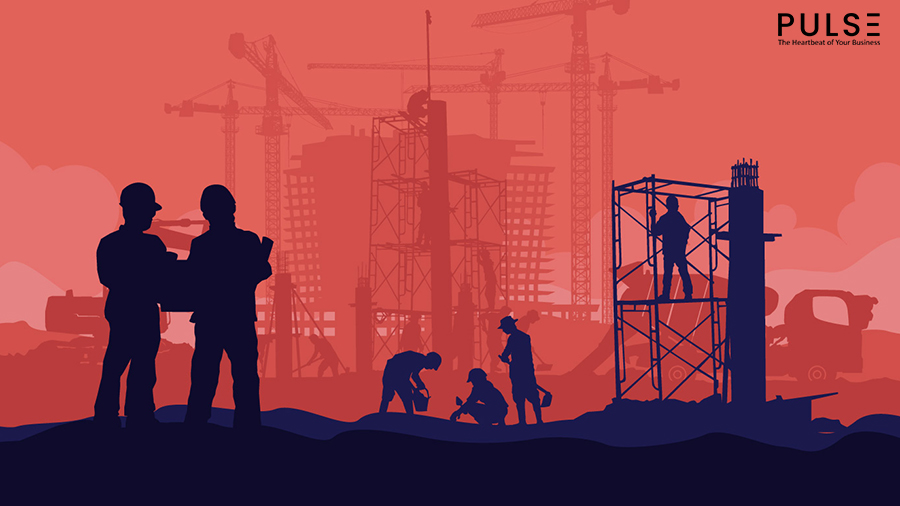Even the most safety-compliant construction companies are exposed to risks, hazards, and dangers despite exercising caution. Unfortunately, such is the nature of risks!
According to recent statistics from the Occupational Safety and Health Administration (OSHA), the construction industry accounts for more than 20% of all worker-related fatalities in the United States (OSHA). Builders and allied trades are at constant risk of hazards as they are surrounded by heavy materials, machinery, and other risky tools.
The staggering number of construction site accidents can not be avoided but can be worked upon. Raising awareness about the regularly cited types of accidents amongst the workers can help mitigate the risks better.
Five Incident Types all workers should Stay Safe From

There are countless ways a worker can get hurt at a construction site. Therefore, construction site safety compliance involves being attentive at all times.
The way to mitigate risks for workers is to be aware of the various incident types, ano be prepared to take action if something happens. Below are some of the most prevalent incident types:
1. Work at height incidents
Workers in the construction industry are frequently expected to operate at great heights, on scaffolding and ladders, in windows, and on roofs. As a result, scaffolding accidents, ladder accidents, roofing accidents, and other falls are common work-at-height incidents at the site.
According to the Bureau of Labor Statistics, work from height accidents accounts for 34% of all construction worker deaths on the job. Such incidents can result in tragic construction accidents with broken bones, fractures, back and neck injuries, and potentially death.
In such a case, safety managers oversee the safety of the workers and the contractors in the workplace. For example, to mitigate height-related risks, managers need to ensure that fall protection equipment (e.g., harnesses), toe rails surrounding open platforms, railings, and personal protective equipment are all available at the site.
2. Struck by objects incidents
Falling objects pose a serious threat to workers on the construction site. It can result in a risk ranging from concussion to even death. In addition, when workers tend to work on projects on multiple levels, they are exposed to the risk of objects dropping from a height on the heads, flying debris, hanging loads that come loose, and swinging or rolling loads.
Falling equipment, building material, or beams often strike the workers working below, and they’re caught off guard. All these factors can contribute to severe incidents in construction sites.
3. Slipping and tripping incidents
There are various ways a construction site enhances the risk of slipping and tripping. For example, holes in the ground, pieces of equipment, uneven ground, and even weather conditions often cause unexpected injuries.
Despite taking proper precautions and following the right protocols, slips, trips, and falls can easily occur at a construction site. To limit such risks, workers should be encouraged to be aware of their surroundings at all times.
4. Electrocutions, fires, and explosions incidents
Construction sites are usually in progress with exposed wires, power lines, and unfinished electrical systems around. These pose a severe threat to workers and can result in electrocution or fatal shock.
At the same time, unfinished pipings and gas leaks can also cause fires and explosions at the construction sites.
5. Struck by vehicle incidents
According to the Occupational Safety and Health Administration or OSHA, vehicle traffic and poor operations account for around three work zone fatalities per day and over 40,000 injuries per year.
Construction sites are often located near roads and highways. As a result, speeding and distracted drivers colliding with workers are common incidents around construction sites.
Hi-Vis gear should be a mandate on construction sites as the risk of a moving vehicle striking a worker is high.
How to Prevent Construction Site Incidents?
All the above incident types can inflict severe injuries and fatalities, upend the livelihood of the workers and their families, and immensely impact the company’s future.
You can not deny that construction sites are highly prone to hazards, but such accidents are largely preventable. Each employer should thereby take responsibility to ensure that the worker takes every possible precaution while working.
In addition, workers should follow incident Management best practices for safety and productivity at the workplace.
Furthermore, a sensible proactive step to reduce the likelihood of accidents and injuries is to train the workers now and then. Some of the ways to prevent such incidents are as follows:
1. Conducting safety training
All employees of the company, irrespective of their designation, must undergo a thorough safety training session. Workers should be educated on topics such as workplace safety standards and hazards.
Workers should also be encouraged for safety drills and should be trained to use the equipment. Such meetings help workers to be prepared for unexpected hazards that may take place.
2. Providing the right personal protective gear (PPE)
One of the best ways to secure workers is by providing them all with the right PPE. PPE is essential for keeping construction workers safe, and employees should always wear the appropriate protective gear for the job.
Hi-Vis clothing, hard hats, gloves, safety boots, etc., are some of the essentials that all workers should use to protect themselves against such incidents.
3. Deploying the right software
Digitalization is a critical component of building project safety and success. Businesses can now deliver software in the form of mobile applications that are more convenient.
Pulse is an improvement-focused EHS platform that streamlines safety compliance to never-before levels. Move from issue detection to action at the drop of a hat. The mobile-ready, universally-integrable, and secure system is your key to effective safety compliance.
Sign up for Pulse and enhance your organization’s safety by digitizing your entire audit management process, starting today.
